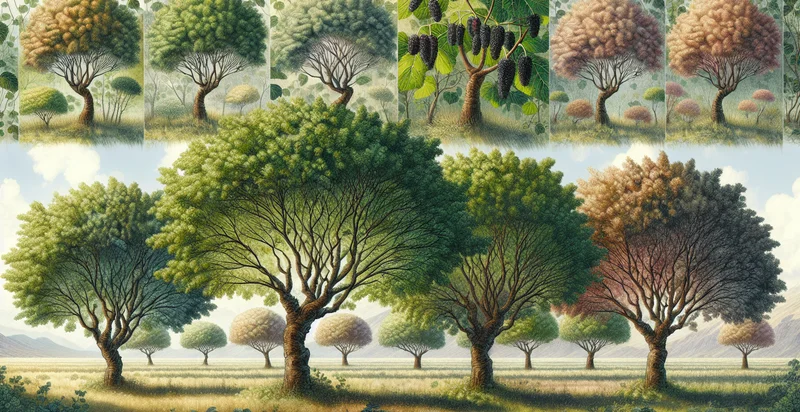Identify if tree is a mulberry
using AI
Below is a free classifier to identify if tree is a mulberry. Just upload your image, and our AI will predict if the tree is a mulberry - in just seconds.

Contact us for API access
Or, use Nyckel to build highly-accurate custom classifiers in just minutes. No PhD required.
Get started
import nyckel
credentials = nyckel.Credentials("YOUR_CLIENT_ID", "YOUR_CLIENT_SECRET")
nyckel.invoke("if-tree-is-a-mulberry", "your_image_url", credentials)
fetch('https://www.nyckel.com/v1/functions/if-tree-is-a-mulberry/invoke', {
method: 'POST',
headers: {
'Authorization': 'Bearer ' + 'YOUR_BEARER_TOKEN',
'Content-Type': 'application/json',
},
body: JSON.stringify(
{"data": "your_image_url"}
)
})
.then(response => response.json())
.then(data => console.log(data));
curl -X POST \
-H "Content-Type: application/json" \
-H "Authorization: Bearer YOUR_BEARER_TOKEN" \
-d '{"data": "your_image_url"}' \
https://www.nyckel.com/v1/functions/if-tree-is-a-mulberry/invoke
How this classifier works
To start, upload your image. Our AI tool will then predict if the tree is a mulberry.
This pretrained image model uses a Nyckel-created dataset and has 2 labels, including Is Mulberry and Is Not Mulberry.
We'll also show a confidence score (the higher the number, the more confident the AI model is around if the tree is a mulberry).
Whether you're just curious or building if tree is a mulberry detection into your application, we hope our classifier proves helpful.
Related Classifiers
Need to identify if tree is a mulberry at scale?
Get API or Zapier access to this classifier for free. It's perfect for:
- Agricultural Monitoring: This function can assist farmers in monitoring their crops by accurately identifying mulberry trees among other species. By automating tree identification, farmers can make informed decisions about their agricultural practices and ensure better crop management.
- Ecological Research: Researchers studying local ecosystems can utilize this function to identify and catalog mulberry trees in various habitats. This identification process aids in biodiversity assessments and contributes to environmental conservation efforts.
- Pest Management: Integrated with pest management systems, this identifier can help in detecting mulberry trees that may be more susceptible to certain pests. By identifying these trees, agricultural specialists can implement targeted pest control strategies, reducing crop loss.
- Urban Planning: Urban planners can use this function to identify mulberry trees in public parks and urban areas. This information can inform tree maintenance schedules, landscape planning, and the selection of trees for reforestation projects.
- Food Industry: Companies involved in the production of mulberry-based products can leverage this function to identify and source the right trees. Accurate identification ensures the quality of raw materials and enhances supply chain efficiency.
- Education and Awareness: Educational institutions can incorporate this function into programs that teach students about different tree species, including mulberries. This hands-on identification approach can enhance learning experiences in botany and environmental science.
- Conservation Efforts: Non-profit organizations focused on reforestation can use this identifier to identify existing mulberry trees that can be preserved or replicated. This aids in planning effective conservation campaigns that promote biodiversity and support native ecosystems.


